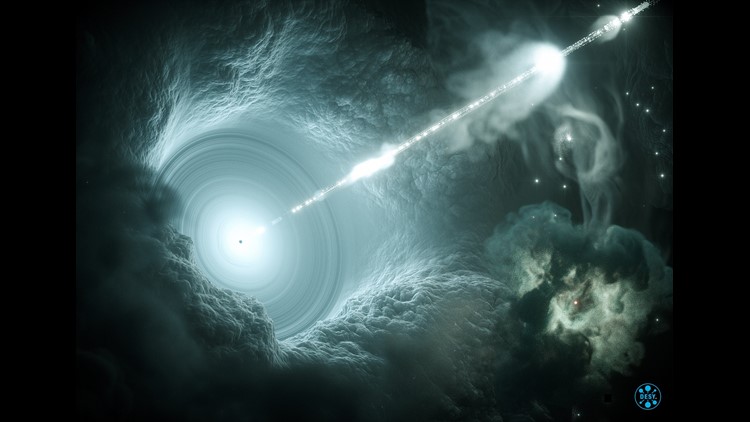Neutrinos, so-called “ghost particles” scattered across the universe, can be 10 million times lighter than the mass of an electron, according to a new study.
Neutrinos are referred to as ghostly because they are extremely volatile, or vaporous, cosmic particles that can pass through any kind of matter without changing. They have almost no mass — but now scientists have calculated the mass of the lightest type of neutrino.
They can travel through the most extreme environments, like stars, planets and entire galaxies, and remain the same. But neutrinos, while highly energetic, have no charge. Not even the most powerful magnetic field can affect them.
Last year, scientists were able to trace the origins of a high-energy, tiny neutrino for the first time. It traveled 3.7 billion light-years to Earth. It was found by sensors deep in the Antarctic ice in the IceCube detector.
Scientists and observatories around the world were able to trace the neutrino to a galaxy with a supermassive, rapidly spinning black hole at its center, known as a blazar. The galaxy sits to the left of Orion’s shoulder in his constellation and is about 4 billion light-years from Earth.
Different types of neutrinos appear as three different masses, but the lightest one was unknown until now. And astronomers still don’t know much else about the differences in these three types.
The study published Thursday in the journal Physical Review Letters.
“A hundred billion neutrinos fly through your thumb from the Sun every second, even at night,” said Arthur Loureiro, study author and PHd student in the University College London’s Physics & Astronomy department. “These are very weakly interactive ghosts that we know little about. What we do know is that as they move, they can change between their three flavours, and this can only happen if at least two of their masses are non-zero.”
The mix of three different masses is like mixing ice cream flavors, he said.
“The three flavors can be compared to ice cream where you have one scoop containing strawberry, chocolate and vanilla,” Loureiro said. “Three flavors are always present but in different ratios, and the changing ratio-and the weird behaviour of the particle-can only be explained by neutrinos having a mass.”
The idea of neutrinos having mass garnered scientists Takaaki Kajita and Arthur McDonald the 2015 Nobel Prize in Physics.
In order to calculate the low mass of the lightest neutrino, data from 1.1 million galaxies collected by particle physicists and cosmologists was used. This allowed them to measure the expansion rate of the universe. Neutrinos are prevalent in the universe, but hard to spot. The scientists required as much data as possible to have every advantage in their research.
“We used information from a variety of sources including space- and ground-based telescopes observing the first light of the Universe, exploding stars, the largest 3D map of galaxies in the Universe, particle accelerators, nuclear reactors, and more,” Loureiro said.”As neutrinos are abundant but tiny and elusive, we needed every piece of knowledge available to calculate their mass and our method could be applied to other big questions puzzling cosmologists and particle physicists alike.”
The supercomputer, known as Grace, at University College London allowed the researchers to create a mathematical model. The supercomputer crunched half a million computing hours, which would have taken 60 years on a single processor.
The researchers discovered the mass to be 10 million times lighter than an electron. Calculating this mass can help researchers who are studying dark matter, dark energy and the structure of the universe.



